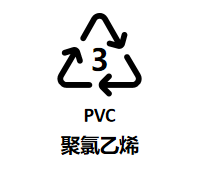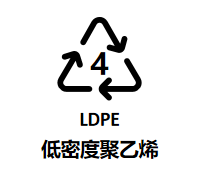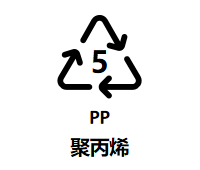
 +86-25 8222 1642
+86-25 8222 1642
News
What are the members of the PLASTIC family?
- Categories:News
- Time of issue:2025-11-26
【Summary description】Plastic products come in a wide variety of styles, which makes many people curious about which materials are most commonly used. Below are some of the most frequently used types of plastics; let's take a look:
What are the members of the PLASTIC family?
【Summary description】Plastic products come in a wide variety of styles, which makes many people curious about which materials are most commonly used. Below are some of the most frequently used types of plastics; let's take a look:
- Time of issue:2025-11-26

PET (polyester) code 1, also called polyester resin, the raw material is milky white or light yellow, has good transparency, non-toxic, high density, high hardness, and wear resistance, but is not resistant to hot water immersion and alkali resistance. The operating temperature is 65°C ~ -20°C. Harmful substances are easily released above this temperature and cannot be used repeatedly for a long time. It is mainly used in packaging materials for beverage bottles, mineral water bottles, casings and accessories in electronic appliances, etc.

HDPE (high-density polyethylene) code 2, also called low-pressure ethylene, the raw material is white, non-toxic and odorless, has low density, good toughness, acid and alkali resistance, but poor anti-aging properties. It is difficult to clean and should not be recycled. It is mainly used for packaging bottles of detergents, wire and cable sheaths, etc.

PVC (polyvinyl chloride) code 3, also known as adhesive film, the raw material is yellow and translucent, has good transparency, has the characteristics of high strength, good flexibility, and is not brittle. PVC is divided into soft and hard. The difference between them depends on whether softeners are added.

LDPE (low-density polyethylene) code 4, also called high-pressure polyethylene, is milky white, odorless and non-toxic. It has the characteristics of good transparency, good flexibility, alkali resistance, but poor heat resistance. The density is the lowest among all polyethylenes. When it exceeds 110°C, it will heat-melt to release toxic substances. It is mainly used for cling film, plastic film, etc.

PP (polypropylene) code 5, also known as 100% glue, has a low density. The raw material is transparent and light in appearance. It is non-toxic and tasteless. It has high strength and elasticity. It is chemical-resistant, collision-resistant, and resistant to high temperatures of 100 to 120 degrees Celsius. It can be heated in a microwave oven, but it is prohibited to use recycled products to hold food. It is commonly used in plastic lunch boxes, water cups, food packaging boxes and other products. PP materials are used. Due to these characteristics of PP, Australian currency is made of this plastic.

PS (polystyrene) code 6, also called hard glue, has a higher hardness than PP. The raw material has high transmittance, is colorless and odorless, and is easy to dye, but has poor toughness and is easily brittle. It will release harmful substances when the temperature exceeds 70°C. It is commonly used in disposable foam lunch boxes, packaging linings, decorative materials, etc. Since it is not easy to recycle, it is now gradually replaced by paper materials.

Other categories, code 7, include acrylic, polycarbonate, polylactic acid, etc. The characteristics of these plastics are that they cannot be heated in a microwave oven, cannot be sterilized at high temperatures, and cannot be exposed to direct sunlight, because this may release bisphenol A, which may cause harm to the human body.
PA (polyamide), also called nylon, has no code name. The raw material is non-toxic and odorless, has good toughness, wear resistance, heat resistance, and chemical resistance. There are many types of PA plastics. Especially now, by mixing various fiber materials, the various properties of PA plastics have been significantly improved. It has replaced some metals and is widely used in auto parts, household appliance casings, protective equipment and other fields.
ABS plastic has no code name. It is a composite of three substances: acrylonitrile (A), butadiene (B), and styrene (C). It is also called ABS resin. Therefore, ABS has the common properties of these three substances, such as impact resistance, heat resistance, and low temperature resistance. It has good overall performance, is cheap, and has a wide range of uses. ABS plastic is non-toxic, odorless, and appears as translucent or transparent particles. Many parts in cars are made of ABS plastic, and parts in household appliances and office machines are also made of ABS.

Contact us
Shangfeng Tangshan Industry Park, Jiangning District
Nanjing 211134, P.R. China
Tel:86-025-82221642
Fax:86-025-82221643
E-mail:info@tsp.cc
Product Series

苏ICP备11075272号-1